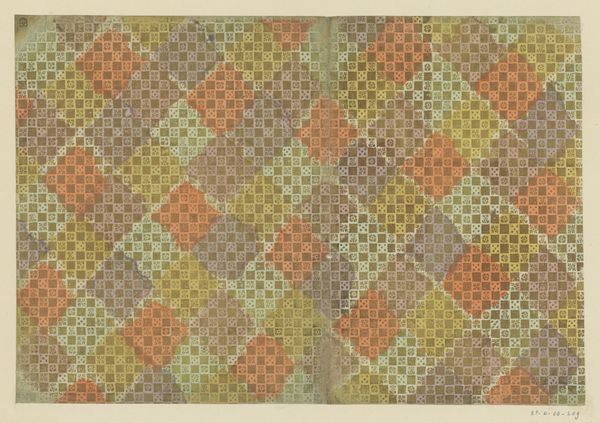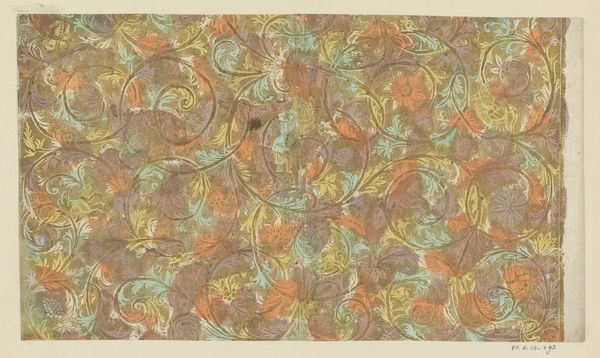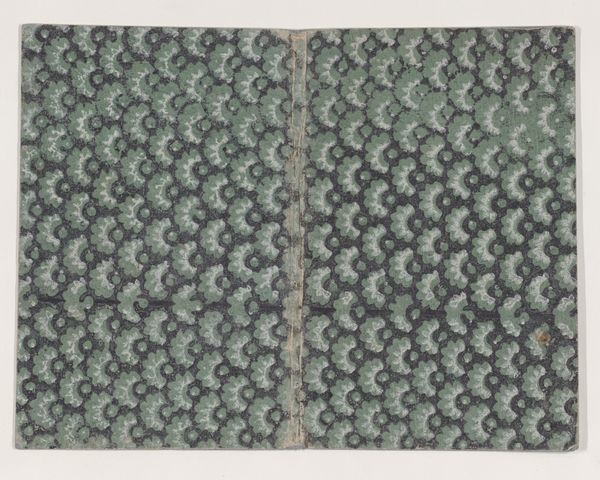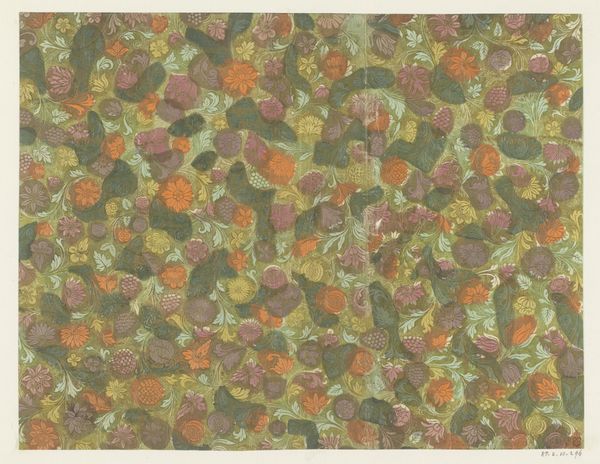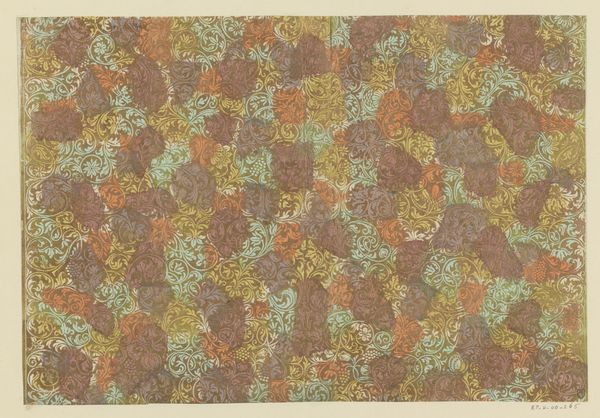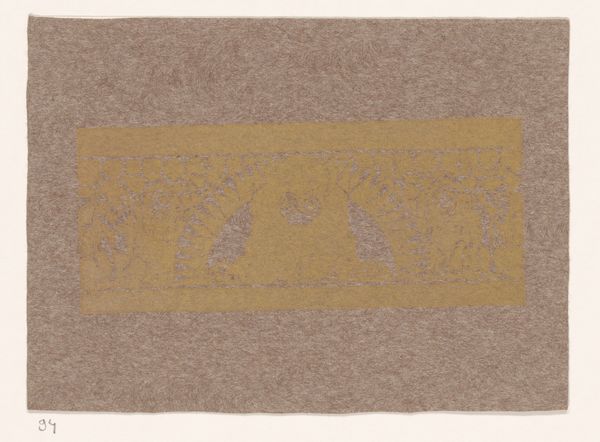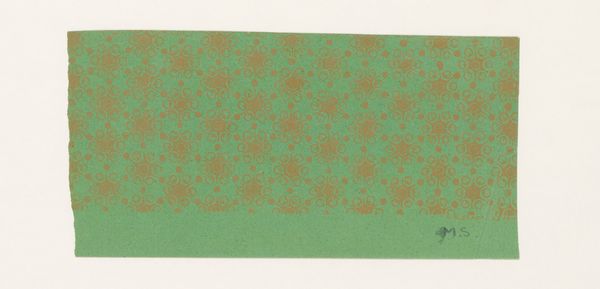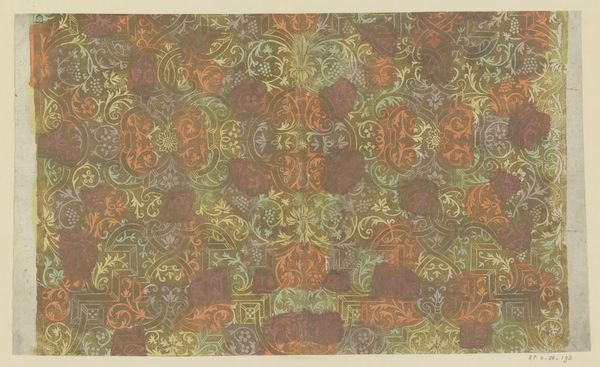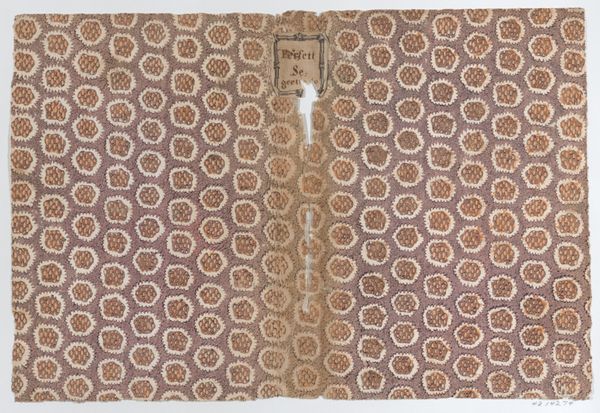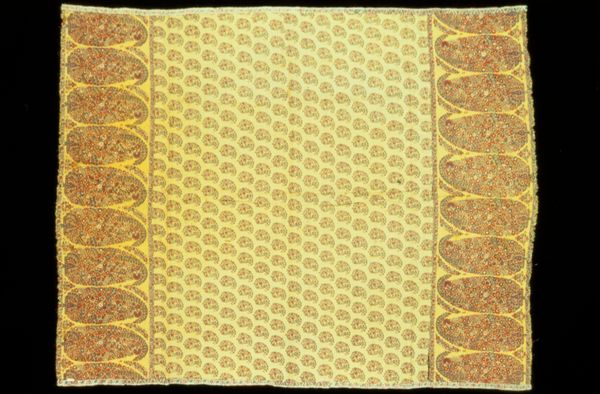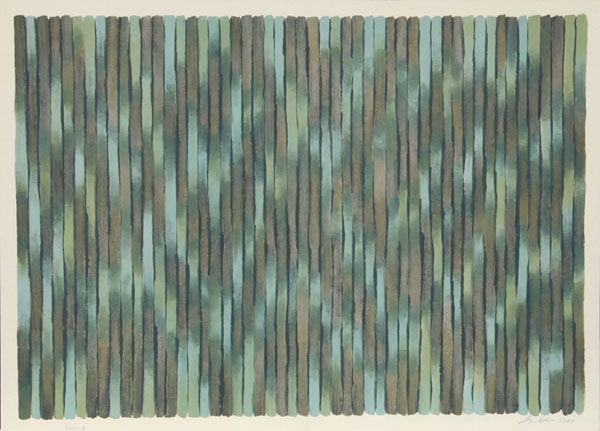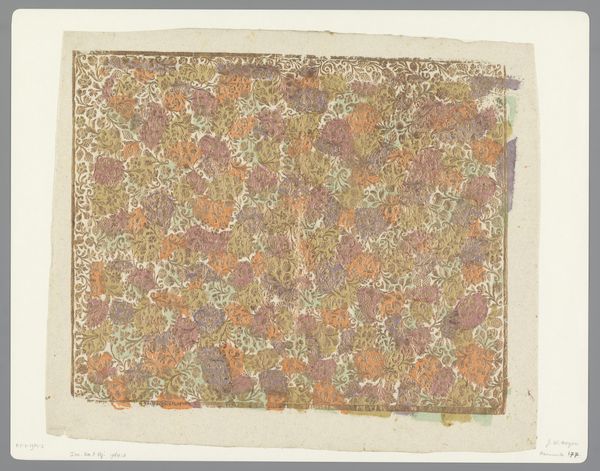
drawing, paper
#
drawing
#
paper
#
geometric
Dimensions: height 263 mm, width 430 mm
Copyright: Rijks Museum: Open Domain
Editor: This is “Blad met schaakbordpatroon,” or “Sheet with Chessboard Pattern,” made with mixed media on paper between 1750 and 1794 by Johann Carl Munck. At first glance, I see this incredibly dense matrix, like a tightly woven tapestry of squares. There’s an almost hypnotic effect in the repetition. What do you see in this piece? Curator: Immediately, I'm drawn to the tension between order and chaos. The geometric pattern suggests control, but the blurred edges and faded colours introduce an element of chance and decay. The grid itself speaks of systems and logic – think of maps, mathematical diagrams, even woven textiles where each thread plays its part. Yet the imperfections hint at the human hand, disrupting any sense of pure mechanical reproduction. It evokes, for me, a coded language. Editor: Coded language? Can you elaborate on that? Curator: Consider the era. Grids were being used to organise and categorise all manner of things from cities to species, influenced by the Enlightenment. But what if this grid isn’t about ordering the external world? Perhaps it’s an attempt to map the internal, the psychological landscape of the individual, mirroring their own emotional complexities and conflicts through pattern and decoration? The individual squares with their dot-matrix arrangement represent societal influence, with the overlapping hues evoking the internal world. It’s cultural memory in its purest form. Does it trigger similar thoughts for you? Editor: I see what you mean about the emotional complexity. Initially I saw rigid repetition, but thinking of the grid as representing psychological or cultural structures... it definitely shifts my perception. The fact that the colours bleed and fade becomes more poignant. I appreciate the historical context you brought in here! Curator: Absolutely. And by exploring those symbols we are actively creating our own meaning and continuing this image’s story! It's why these pieces resonate so deeply.
Comments
No comments
Be the first to comment and join the conversation on the ultimate creative platform.
